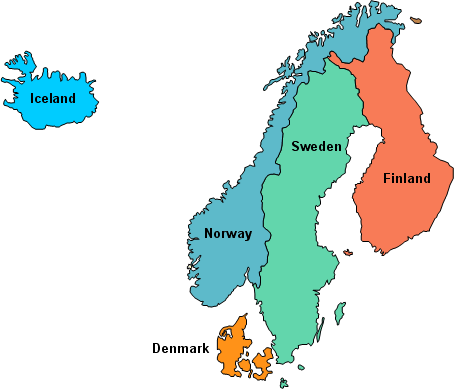My chair is uncomfortable, I don’t understand Danish, and it smells like someone in my general vicinity had kippers for dinner. I’m at the Oslo Central Library’s panel discussion on “What is good Scandinavian literature?,” and it isn’t going well.
On the panel are Geir Gulliksen, a Norwegian author and editor, Swedish critic Jonas Thente from Dagens Nyheter, and Tina Brødsgaard Andersen, an editor of the Danish literary website litteratursiden.dk. We’ve gathered to launch a series of debates on Scandinavian literature.
I notice that the panel has been furnished with cool old velvety mid-century sofas and chairs, the kind I’d love to have in my living room.
But perhaps these chairs are too comfortable? Rather than ripping one other apart with impassioned critique, these panelists nearly put me to sleep with their friendly, all-too-polite suggestions on what I ought to be reading from Sweden and Denmark.
“Ingvild Rishøi,” Gulliksen suggests. “Jan Roar Leikvoll. Øyvind Rimbereid.” These big names in Norwegian contemporary literature sound, I know, like any other Norwegian names if you step just an inch outside their insular nexus of fame.
Last year, while working for a small Norwegian newspaper, my shrewd editor enforced a deceptively simple rule. One out of four small literary pieces each week had to relate to something Scandinavian.
A simple enough task, but it was really difficult! The Danish and Swedish literary scenes were as foreign to me as, say, the French literary scene. Despite the fact that as a Norwegian-speaker I was able to read the languages well enough, parsing my way through the Danish and Swedish culture pages challenged me as much as reading them in French would have. It wasn’t the linguistic disparity that troubled me: Without being immersed in the requisite cultural knowledge, these Scandinavian literary reports were totally opaque.
Luckily, after trying (and failing) a few times with literature from Denmark and Sweden, I discovered that my editor, tough as she was, would accept a French story if I really came up empty-handed on Scandinavia. Just as long as it wasn’t yet another story from Brooklyn, she would allow it.
Once upon a time, Gulliksen says, he was a part of a writing school exchange in which students from the Norwegian school at Bø met students from the leading Danish writing school. Presented with a text, the Danes proceeded to shred it like the harshest critics, wringing every possible shade of meaning out of the writing.
But when the Norwegians were presented with the same text, every student’s approach was utterly process-oriented instead. The writers found themselves wondering how the author had arrived at this and where she might be going rather than shredding the text to bits. Norway and Denmark were—despite being geographical next-door neighbors—oceans apart when it came to the culture of their top writing schools, Gulliksen said.
I dutifully take notes as the speakers direct me toward great new writers I’ve never heard of. But I can tell even as I’m writing them down that my curiosity about them is muted; I know from experience that it takes more than just being able to understand the language for a book to speak outside the immediate culture it emerged from. Case in point: The book I’m resting my notebook on is Jesmyn Ward’s Men We Reaped, which I had checked out just moments before the panel started. Later that evening, after walking home through Oslo’s rainy streets with my cousin K and complaining about the endless winter, I start the book and almost immediately—within a paragraph, to be precise—fall under its spell. Racism and life in the American south for black people is one of the book’s major themes, and even though I’m a Norwegian who’s never been south of Washington, D.C., the fact that the story comes out of a culture I have little familiarity with doesn’t matter whatsoever.
But for Norway, Sweden, and Denmark? So linguistically close, and yet so culturally distant. Every now and again, someone like Knausgård pops up and is readable for everyone, and before him we were all reading The Girl with the Dragon Tattoo. But those books were hits the world around, not just Scandinavia.
So, in answer to the night’s question, “How well do you know your neighbor?,” the answer is, not very well at all. In fact, probably just about as well as you, dear non-Scandinavian reader, do. Our countries’ shared regional and linguistic closeness is a false cognate for cultural closeness. And for that, we can’t blame the translators.

